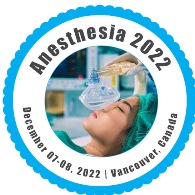Call for Abstract
Scientific Program
7th International Conference on Anesthesia, will be organized around the theme “Current Research and New Frontiers in Anesthetic field”
Anesthesia 2022 is comprised of keynote and speakers sessions on latest cutting edge research designed to offer comprehensive global discussions that address current issues in Anesthesia 2022
Submit your abstract to any of the mentioned tracks.
Register now for the conference by choosing an appropriate package suitable to you.
An anesthetic is a medication to prevent pain during surgery, completely hindering any inclination rather than a pain relieving. A wide assortment of medications is utilized as a part of present day sedative practice. Numerous are once in a while utilized outside anesthesia, in spite of the fact that others are utilized ordinarily by all controls. Anesthetics are classified into two classes: general anesthetics, which cause a reversible loss of consciousness, and local anesthetics, which cause a reversible loss of sensation for a restricted region of the body.
Sedation is the lessening of irritability or distress by administration of sedative medications, generally to facilitate a medicinal method or diagnostic system. Cases of medications which can be utilized for sedation include isoflurane, propofol, ketamine, lorazepam and midazolam. Sedation is regularly utilized as a part of minor surgeries, for example, endoscopy, vasectomy, or dentistry and for reconstructive medical procedure, couple of corrective medical procedures, evacuation of knowledge teeth, or for high-uneasiness patients.
Ambulatory Anesthesia involves simple surgical procedures that are expected to have minimal effects on a patient's body functions and cause mild pain that can easily be controlled with oral medication. Ambulatory anesthesia patients typically go home on the same day of their surgery, unless closer observation is needed. Short-acting anesthetics and specialized anesthetic techniques as well as care specifically focused on the needs of the ambulatory patient are used to make your experience safe and pleasant.
Pediatric Anesthesia has become an increasingly important aspect of anesthesiology generally and of pediatric surgery specifically. Recent advances in pediatric surgery make it mandatory that anesthesiologists, pediatricians and surgeons carefully assess the anesthetic agents and technics which will be most effective in infants and children. Anesthetic workplace to be used for pediatric anesthesia needs to meet various prerequisites and must consider over the extraordinary physiological parts of the different age groups of adolescents, from premature infants to class youngsters.
Spinal anesthesia, also called as spinal block, subarachnoid block, intradural block and intrathecal block, is a type of local anesthesia including the infusion of a local anesthetic into the subarachnoid space, for the most part through a fine needle, more often than not 9 cm (3.5 in) long. For obese patients longer needles are accessible (12.7 cm/5 inches). The tip of the spinal needle comprises a point or tiny bevel.
Epidural Anesthesia is a type of neuraxial anesthesia; local anesthetic (LA) is injected into the epidural space to anesthetize the spinal nerve roots that traverse the space. Epidural anesthesia is used for anesthesia of abdominal, pelvic, and lower extremity procedures and, less commonly, thoracic procedures. It may be used to supplement general anesthesia for thoracic, abdominal, and pelvic procedures and for postoperative analgesia following these procedures.
The field of anesthesia is now 150 years old and consists of inhalation, parenteral, and local anesthetics, as well as anesthetic adjunct agents that can improve the quality and reduce the side effects of the anesthetic procedure. While anesthetics, based on their diverse structures and side-effect profiles, were thought to produce their effects by a simple perturbation of the lipid/protein components of the cell membrane – the unitary theory of anesthesia – recent findings suggest that there may indeed be discrete targets for anesthetic effects.
Many artificial neurosteroids have been utilized as analgesics for the purpose of general anesthesia during surgeries. The finest known about these are alphaxolone, alphadolone, hydroxydione and minaxolone. The first of these to be introduced was hydroxydione, which is the esterified 21-hydroxy subsidiary of 5β-pregnanedione. Hydroxydione turned out being a useful narcotic prescription with a commendable safety profile, yet was agonizing and alarming when implanted probably due to poor water solvency.

